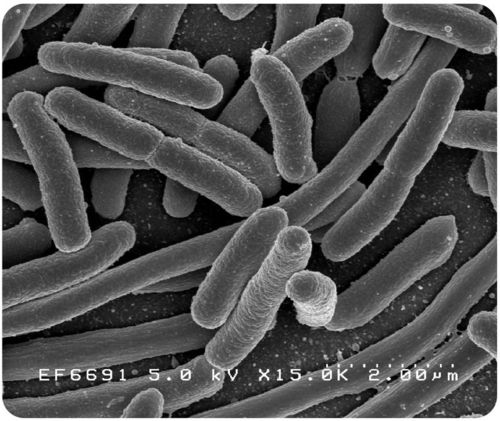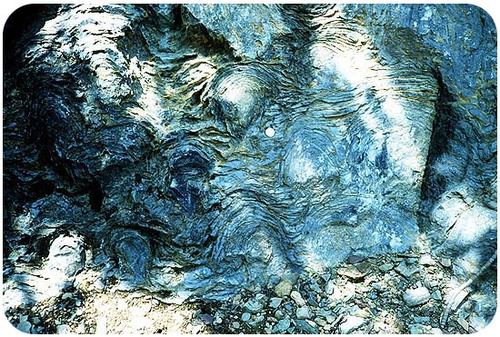12.2 Early Earth
12.2 Early Earth
Lesson Objectives
- Describe the supercontinents that have existed in Earth history.
- Discuss how life began and what early life was like.
- Trace the evolution of life from the first cells to multi-cellular organisms.
Vocabulary
- DNA (deoxyribonucleic acid)
- eukaryote
- nucleic acid
- prokaryote
- RNA (ribonucleic acid)
- supercontinent
Introduction
Earth has changed many times over billions of years. Huge mountains have formed, been destroyed, and been replaced with new mountains. Continents have moved, split apart and collided with each other. Ocean basins have opened up. Life on Earth evolved slowly for billions of years.
Early Continents
The earliest crust was probably basalt. It may have resembled the current seafloor. This crust formed before there were any oceans. More than 4 billion years ago, continental crust appeared. The first continents were very small compared with those today.
Continents Grow
Continents grow when microcontinents, or small continents, collide with each other or with a larger continent. Oceanic island arcs also collide with continents to make them grow.
Supercontinents
There are times in Earth history when all of the continents came together to form a supercontinent. Supercontinents come together and then break apart. Pangaea was the last supercontinent on Earth, but it was not the first. The supercontinent before Pangaea is called Rodinia. Rodinia contained about 75% of the continental landmass that is present today. The supercontinent came together about 1.1 billion years ago. Rodinia was not the first supercontinent either. Scientists think that three supercontinents came before Rodina, making five so far in Earth history.
Early Plate Tectonics
Since the early Earth was very hot, mantle convection was very rapid. Plate tectonics likely moved very quickly. The early Earth was a very active place with abundant volcanic eruptions and earthquakes. The remnants of these early rocks are now seen in the ancient cores of the continents.
Ancient Life
For the first 4 billion years of Earth history there is only a little evidence of life. Organisms were tiny and soft and did not fossilize well. But scientists use a variety of ways to figure out what this early life was like.
Life Begins
Life probably began in the oceans. No one knows exactly how or when. Life may have originated more than once. If life began before the Moon formed, that impact would have wiped it out and it would have had to originate again. Eventually conditions on Earth became less violent. The planet could support life.
The first organisms were made of only one cell (Figure below). The earliest cells were prokaryotes. Prokaryotic cells are surrounded by a cell membrane, but they do not have a nucleus. The cells got their nutrients directly from the water. The cells needed to use these nutrients to live and grow.
E. coli (Escherichia coli) is a primitive prokaryote that may resemble the earliest cells.
The cells also needed to be able to make copies of themselves. To do this they stored genetic information in nucleic acids. The two nucleic acids are DNA (deoxyribonucleic acid) and RNA (ribonucleic acid). Nucleic acids pass genetic instructions to the next generation.
Oxygen Enters the Atmosphere
Early cells took nutrients from the water. Eventually the nutrients would have become less abundant.
Around 3 billion years ago, photosynthesis began. Organisms could make their own food from sunlight and inorganic molecules. From these ingredients they made chemical energy that they used. Oxygen is a waste product of photosynthesis. That first oxygen combined with iron to create iron oxide. Later on, the oxygen entered the atmosphere.
Some of the oxygen in the atmosphere became ozone. The ozone layer formed to protect Earth from harmful ultraviolet radiation. This made the environment able to support more complex life forms.
Early Organisms
The first organisms to photosynthesize were cyanobacteria. These organisms may have been around as far back as 3.5 billion years and are still alive today (Figure below). Now they are called blue-green algae. They are common in lakes and seas and account for 20% to 30% of photosynthesis today.
These rocks in Glacier National Park, Montana may contain some of the oldest fossil microbes on Earth.
Life Gets More Complex
Eukaryotes evolved about 2 billion years ago. Unlike prokaryotes, eukaryotes have a cell nucleus. They have more structures and are better organized. Organelles within a eukaryote can perform certain functions. Some supply energy; some break down wastes. Eukaryotes were better able to live and so became the dominant life form.
Multi-Cellular Life Originates
For life to become even more complex, multicellular organisms needed to evolve. Prokaryotes and eukaryotes can be multicellular.
Toward the end of the Precambrian, the Ediacara Fauna evolved (Figure below). These are the fossils discovered by Walcott in the introduction to the next section. The Ediacara was extremely diverse. They appeared after Earth defrosted from a worldwide glaciation. The Ediacara fauna seem to have died out. Other multicellular organisms appeared in the Phanerozoic.
This fossil is from the Ediacara Fauna. Nothing alive today seems to have evolved from the Ediacara organisms.
Lesson Summary
- The first continents were small but they grew over time. Supercontinents have formed at least five times in Earth history.
- Earth was so hot that mantle convection was very rapid. Plates moved quickly.
- The first organisms were prokaryotes. Eukaryotes came on the scene about 2 billion years ago.
- After photosynthesis developed, the atmosphere slowly became more oxygen-rich. Cyanobacteria were dominant. Eventually the atmosphere accumulated free oxygen.
Lesson Review Questions
Recall
1. Why is the ozone layer important for Earth’s life forms?
2. Describe the role of cyanobacteria in changing Earth’s early atmosphere.
Apply Concepts
3. Explain two reasons why having an oxygen-rich atmosphere is important for life on Earth.
Think Critically
4. Describe a world without free oxygen in the atmosphere.
5. Why did life take so long to evolve seemingly small changes, like from prokaryote to eukaryote?
6. Is it possible that the planet could still be home only to prokaryotic cells?
Points to Consider
- Early life was very simple by comparison with the biodiversity we see today. How did so much diversity come to be?
- How do organisms change through time (how do they evolve)?
- Are humans the pinnacle of evolution?
- Log in or register to post comments
- Email this page



